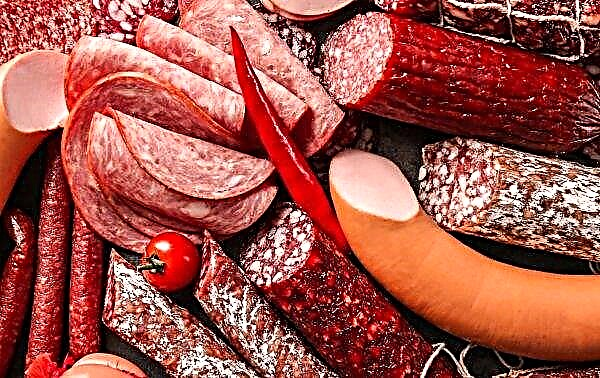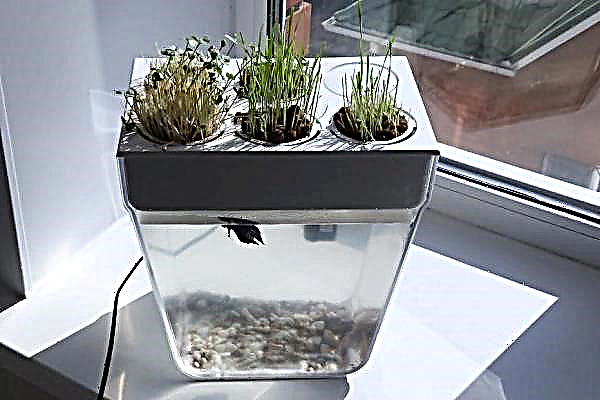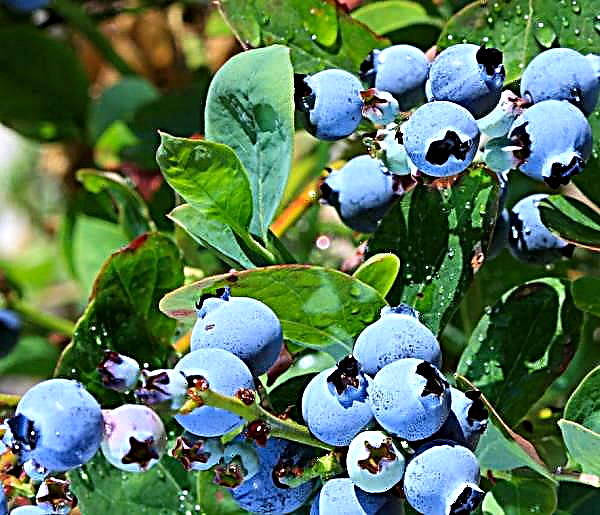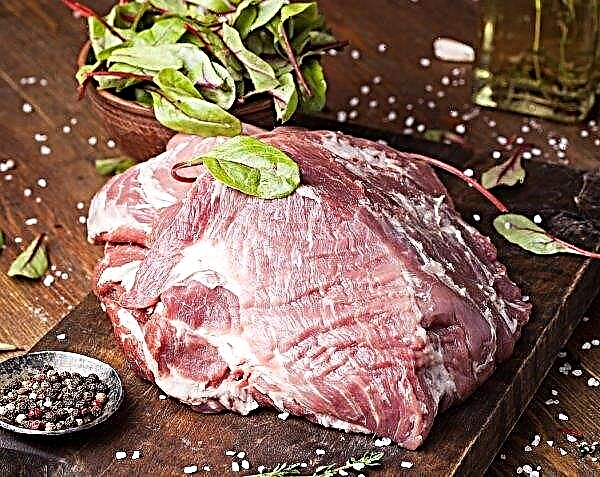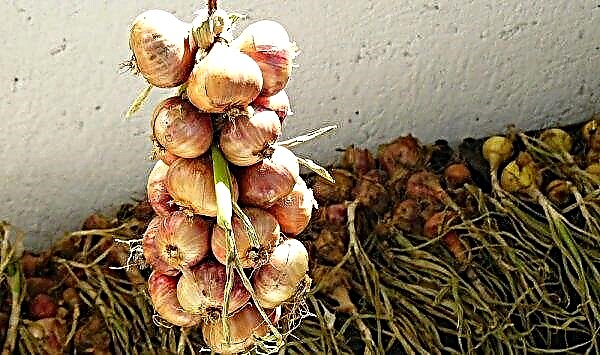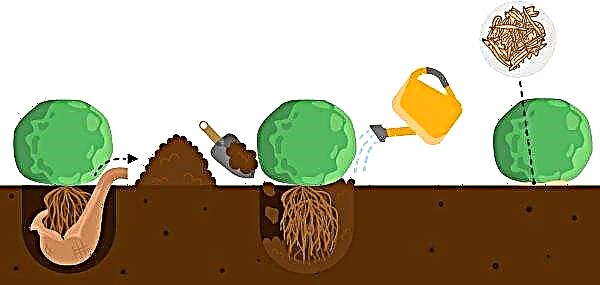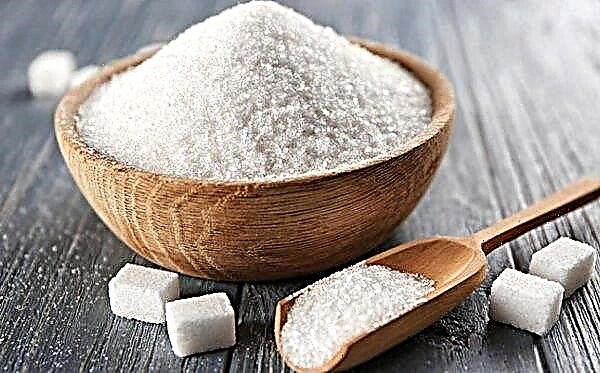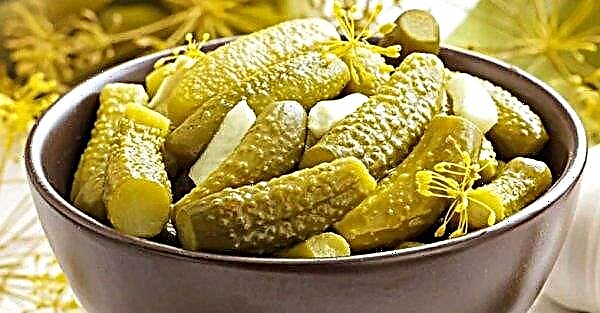Red fescue is valued for being able to adapt to a wide range of conditions. It is resistant to frost, drought, disease and other adverse factors. All types of fescue are able to remain green almost all year round, so they are ubiquitous. In the article you will find information about the advantages and characteristics of the growth of this culture.
Plant description
Fescue (Festuca) is a genus of perennial grasses that are used to decorate the lawns and lawns of parks throughout the Northern Hemisphere, and not just Russia. In the wild, the plant grows in meadows and forest edges, where it forms peculiar clusters with many direct stems.
Red fescue (Festuca rubra) is one of the species of this genus. It is used as a lawn grass. Typically, the culture grows on meadow slopes and mounds, often rich in other types of vegetation. The base of its stem is pubescent with short white hairs, and numerous underground rhizomes form a dense attractive turf 10-15 cm high.
Did you know? Fescue, like other cereals, can be affected by ergot, which releases alkaloids that are toxic to living things. In this case, it becomes dangerous for mares because of the risk of death of offspring.
Botanical Description:
- leaves: filiform, narrowly winding, rough along the edges and veins, 3-15 cm long, 0.4-0.6 mm wide;
- inflorescence: it is a dense, one-sided, ovoid, dark violet or purplish-brown panicle 1-2 cm long, occupying less than 1/4 of the stem length;
- the flowers: friable, short, rough, with a long leg, have a sinuous awn;
- propagated: seeds, root processes.

Fescue is used as a lawn or pasture grass, as it is a genus that represents more than 100 individual plants. It is considered one of the most nutritious for animals and abundantly growing herbs, which can easily grow even in wasteland or in uncultivated areas in mining areas, therefore it is considered valuable in the fight against soil erosion.
Features of growing grass:
- application: lawn grass;
- cultivation features: grows slowly, forms a neat, dense lawn;
- soil type: chalk, clay, loam, sandy soils;
- drainage: the soil is moist, but well-drained;
- acidity level: neutral or acidic;
- lighting: sun or partial shadow;
- winter hardiness zones: 5–9 (minimum winter temperature -29 ° С).

Varieties of Red Fescue
Many site owners believe that the elastic and hard turf of a fescue is an indispensable element of the lawn in a cool climate. It is sown separately or used as part of grass mixtures. This allows you to grow a beautiful, healthy lawn, regardless of what adverse factors will affect it. The species of red fescue includes 12 subspecies.
The most common among them:
- Red (Festuca rubra rubra) - This is the most common subspecies with good vitality and light green dense shoots. He is a universal "partner" for the preparation of various lawn mixtures. Extremely resistant to disease and absolutely tolerant to all types of soils.
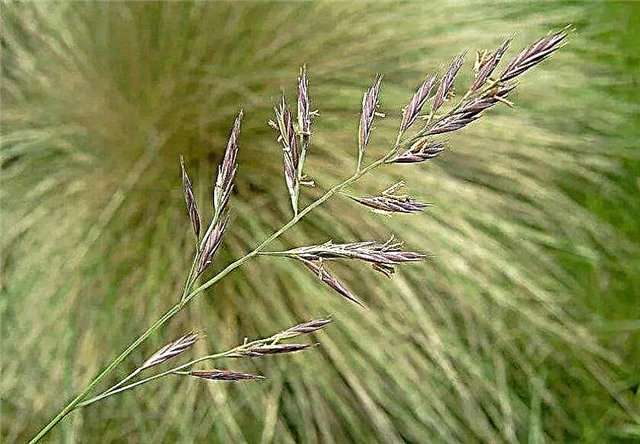
- Hairy (Festuca rubra trichophylla) - characterized by a high density of seedlings. The subspecies is able to maintain a healthy color even at low temperatures. It is resistant to salt, therefore it is used even on lawns with salt irrigation water. It is one of the best for seeding on the fields for playing golf, cricket, tennis courts and for decorating the entrances to official institutions.
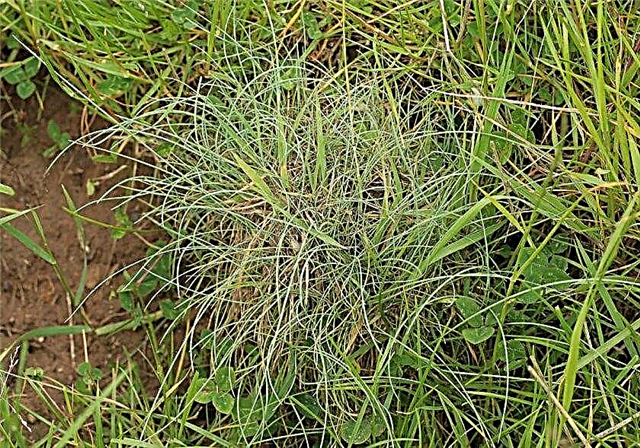
- Rigid (Festuca rubra commutata) - perennial lawn grass with bristle-like, tubular, green leaves and a very high shoot density. This is a loose-bush turf that does not form rhizomes, but such grass is one of the most frost-resistant species.

- Arctic (Festuca rubra arctica) - slow-growing and stress-resistant grass. It is especially suitable for cultivation in areas of low fertility. The subspecies is neutral to limestone soils.

Advantages and disadvantages of using a plant as a lawn grass
Red fescue can be more effective in places prone to increased soil erosion, much more than local plants. It will also grow well where the land is urgently needed to cultivate. Red fescue also resists drought and is characterized by very low fertilizer and water consumption. And this is the main advantage of culture.
Did you know? People created names for wild grasses on the basis of associations. So, grass, similar to oats, received the name "fescue".
- Among other advantages, it is noted that it:
- adapted to various types of soils;
- cold-resistant, suitable for northern territories;
- tolerant to soil salinity;
- tolerant to watering and water quality;
- quickly recovering;
- adapts perfectly to the climate;
- forms the steady lawn, steady against attrition;
- can be cut up to 5 mm in height;
- possesses resistance to diseases.
The main disadvantage of the species - invasiveness. It is able to reproduce not only by seeds, but will also colonize unoccupied territories by spreading rhizomes. Therefore, the fescue marked both advantages and disadvantages.

The second important drawback - this is that the meadows of red fescue in the absence of regular mowing form such a dense structure of rhizomes that it prevents the growth of any other plants. To avoid this, you must not forget about the correct and regular haircut.
Lawn sowing
Planting a lawn from scratch is simpler and easier than it might seem. You will need to follow a series of simple steps to get a beautiful platform with even green grass on it.
Important! When making mixtures, pay attention to the fact that the red fescue will tend to dominate, so do not combine it with delicate herbs for the English garden lawn.
Important steps for planting a lawn:
- choose a time;
- check and improve (if necessary) the soil;
- buy seeds;
- plant them;
- to water;
- keep the new lawn healthy.

Seed selection
Poor seeds will certainly become the main reason why the lawn turned ugly.
Each package has a tag on which are indicated:
- list of herbs;
- their quantity;
- percentage ratio;
- destination;
- germination rate;
- germination percentage.
It is also advisable to see data on the percentage of germination of weeds through the grass you sow, but domestic seed packers often skip this parameter. It is preferable that the package contains 2-3 types of herbs, one of which is fescue, and the second is similar in technical characteristics to it. And its label indicates the purpose - "For the lawn."
Leading agricultural companies usually compose seeds previously treated with a growth stimulant and fungicides from fungal diseases. Therefore, they are economically more profitable to buy. The measures taken will ensure better growth and disease resistance.
Domestic producers usually connect fescue with meadowgrass. Both cultures have the same requirements for growing conditions. But they react differently to increased humidity, excess or lack of sun. Therefore, if one of the grasses is exposed to the negative environmental impact, the lawn will still remain green, because the second plant does not respond to the problem. Both grasses are also the same color, so the lawn will be uniform.

Sowing dates
Under natural conditions, the seeds fall to the ground at the end of summer after ripening, winter safely and begin to germinate in the spring, when the weather is favorable. Therefore, sowing the lawn is possible in spring and autumn. The only period not suitable for planting is mid-summer. At this time, the bright rays of the sun evaporate a lot of moisture and herbs will have to fight for survival. Therefore, focus on the time when the air temperature is at + 12 ° C and there is enough water in the ground.
Landing process
The technology of planting seeds will be as follows:
- Dig a section to a depth of 10 cm. Remove debris (sticks, stones). Break large lumps of soil. Do not grind too much so that the seeds do not sink deeper than 1 cm into the soil, as then not all will germinate.
- Level out areas where water can accumulate. Here the grass will get wet and often have to “repair” the green cover.
- Do not use fungicides to remove weeds. If necessary, cover the area with dark plastic wrap. Under it, under the influence of the sun, the soil warms up, and weeds, seeds and insect pests die.
- Spread lawn starter fertilizer into the soil. For example, "Fertika", "Fasco", "Terrasol", "Complex", "GreenView". When applying, follow the directions on the label.
- After top dressing, the soil must be irrigated.
- Now evenly distribute the seeds over the plot. On average, you need 30–50 g / m². If you do not have a dispenser for even distribution, then increase the rate indicated on the package by 15%. Also remember that you do not need to add more, because the creeping rhizome will still fill all the free areas.
- Sprinkle the seeds with a layer of soil, but so that it does not exceed 1 cm. Gardeners advise covering the seeds with a small layer of straw instead of soil. The porous structure retains soil moisture and provides oxygen access. The soil should be kept moist continuously to increase the chances of germination.
 If the patch is very shaded, make sure that there is a mark on the seed bag - “For shady patches.”
If the patch is very shaded, make sure that there is a mark on the seed bag - “For shady patches.”
How to care for fescue
After the lawn is sown, it should be periodically looked after. Follow simple instructions and follow regular maintenance procedures to keep herbs healthy and free of weed growth. Most of the work will fall in the spring and fall.
Important! Owners of mowers with a roller need to remember that it is imperative to change the cutting direction every time so that the grass is evenly shortened.
The main works and their features:
- Remove weeds and dried grass regularly. They can inhibit growth by blocking the entry of air and nutrients to the roots. In the first few years there will be quite a lot of weeds. These are seeds that were in the soil, and those that were brought by birds or animals. In places where there is excess moisture, moss may appear. In order to reduce its amount, it is necessary to reduce humidity, as well as improve drainage of this area.
- Aeration is needed to maintain the vital activity of soil microorganisms and the development of the root system. The process consists of piercing the soil in different places with a garden fork to allow air to enter the deeper layers of the soil.
- Periodically you will need to mow the lawn with a lawn mower. Do not cut the coating after freezing or when the grass is wet. This increases the risk of infection of plants with fungi and other phytopathogens.
- In places where for some reason the plants have died out, you need to re-sow the seeds. To do this, choose a moderately warm day, and sow according to the above scheme. Timely elimination of such bald patches prevents the settlement of free territory with weeds and moss.
- Fertilizer is required once or twice a year. It will be correct to feed the fescue with nitrogenous compounds in April or early May, and in the fall - to add potassium and phosphate mixtures.
- Along with food, watering is required. The amount and frequency of irrigation will depend on the type of soil and weather conditions in the region. It is optimal to water the grass at the beginning of growth at moderate temperatures - to achieve a better effect.

Diseases and their treatment
Even if the lawn grows well, no one is immune from the possible occurrence of diseases or pests.And the best prevention is:
- fertilize annually;
- water regularly;
- Correctly mow.
If the site has poor drainage and stagnation of moisture occurs, then this can cause rotting of the roots. In this case, part of the grass will die, exposing the problem area. And the fungus itself, causing rotting, with the help of spores will spread around the site, infecting other plants. Prevention of putrefactive processes is well-drained soil, moderate watering and the application of ammonia-potassium fertilizers. It can be ammonium nitrate and potassium sulfate. The application rate is 10 g / m². But the exact dose is better to choose empirically. So, if the grass is actively greening, then they contribute half the norm, and if the number of stems is limited, then they increase by 1.5–2 times.

With the defeat of fungal diseases on the grass spots appear. For example, powdery mildew is a dirty white coating. When signs of the disease appear, the lawn is sprayed with a solution of soda and soap, taken in equal proportions. The treatment is repeated after 5 days. The number of treatments is up to three times, depending on the intensity of infection. When rust appears, the lawn is sprayed with a solution of Bordeaux liquid (1%).
If you need to ennoble the territory - be sure to plant lawn grasses. They look much more attractive than weeds. And caring for them is not too complicated. Use the knowledge gained and enjoy the attractive view of your site.





